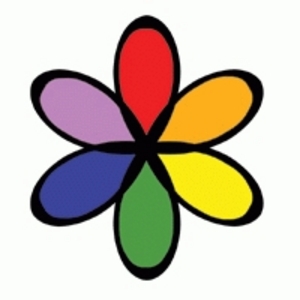Learning about the color wheel and how to create it allow the child to better appreciate the colors in her environment.
Primary Colors
The primary colors are the foundation of the color wheel. They cannot be created, no matter how many different color combinations you try. They are red, blue, and yellow. Let the children explore these colors for a while. Provide only primary colors of markers, paper, and paint.
Secondary Colors
Secondary colors are those you get when mixing two of the primary colors. Red and yellow make orange. Yellow and blue make green. Blue and red make purple. If the children have been experimenting with the paint, they have probably already accidentally discovered these principles.
Reading Mouse Paint
Do a lesson with the book Mouse Paint by Ellen Stoll Walsh. Prior to starting the book, give each child two clumps of different primary-colored playdoh. Have them hold the playdoh in separate hands (e.g. red in the right and yellow in the left) and keep them separate. Start reading the book.
When you get to the point where the mice start mixing the colors, pause. Tell the children to clap their hands together and mix the two clumps of playdoh as you finish the story. When you have finished, ask the children to share what colors they’ve made.
Colored Water in Jars
As a follow-up lesson, make colored water in jars. Use six clear glass baby food jars. Fill three jars with water. Add several drops of red to one, name it, and label it. Add several drops of yellow to the next, and blue to the third. Name and label those.
Next ask the children to guess what will happen if you mix some red and yellow together. Starting with yellow water, pour some in another jar. Use an eyedropper to gradually add red. When all agree the water is now orange, cap and label the jar. Repeat the process to make green and purple.
Another way to do this lesson is to ask the children what you should use to make each secondary color. Follow their instructions exactly. It’s okay to end up with brown!
Independent Follow-up
Set up three small bottles with eyedroppers. Fill each one with a primary color. Have the children explore putting drops of colored water on one of those suction-cup soap dishes, into small bowls, or on a white plate. Lay a piece of white paper towel on top and watch the colors blend. Or, drop the colored water directly onto a white paper towel.
Color Wheel with Paint
Draw or copy a blank color wheel: a circle divided into six equal parts. Create a master wheel for the children. In the top section, draw three red dots. In the next section (going clockwise), put two yellow dots and one red dot. The third section gets three yellow dots. The fourth gets two yellow and one blue. The fifth gets three blue. The last section gets two red and one blue. Laminate it.
Set up the work area with three eyedropper bottles filled with the primary colors of paint. Also supply blank copies of the color wheel. Show the children how to follow the guide as you place the proper dots of paint into each section. Using a paintbrush, mix each section directly on the paper, emphasizing good rinsing in between colors.
This can also be done with colored water in a round six-cup paint palette.
Color Overlays
Children can also make color overlays with a variety of media, following a similar pattern. In this pattern, just label each section with one large dot for each color required. Still provide blank copies of the color wheel. In this experiment, you can use crayons, oil pastels, colored pencils, or colored tissue paper that bleeds when you apply it with watered-down glue. For greater experimentation, allow the children to try al of them at different stations, or change the media daily.
Start by laying down yellow in all three areas that require it, as it is the lightest. Next add the red areas, and finally the blue areas, mixing directly on the paper.
Further Color Exploration
Later, add white and black paint, pastels, and tissue paper for experimentation with tints and shades. Start mixing primary and secondary colors for tertiary colors.
